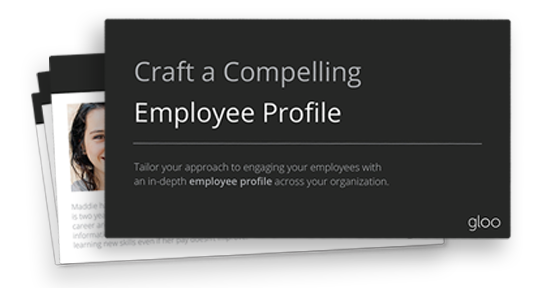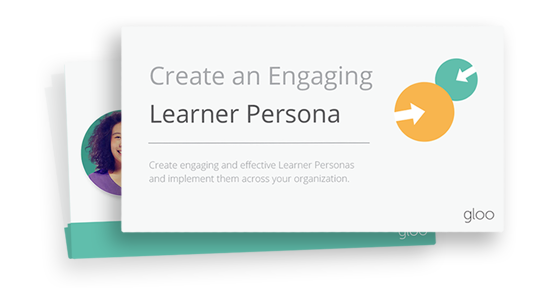Learn the Difference Between an Employee Profile and Learner Persona
Even though the terms are often used interchangebly, employee profiles and learner personas are not the same thing.
Many people download our learner persona template and then ask, “What’s the difference between this and your employee profile template?”
Some people use the terms interchangeably, but there is a very real difference in the way you create, compile and use information to form either a profile or persona. Experience innovators, TandemSeven explain that for each to be accurate, they should be based on research. But the nature of the information in profiles and personas is different.
Organizations want to know about their people. Profiles and personas are two important resources available to help them gain insight. However, the differences between profiles and personas should be understood to be most effective.
In this blog, we’ll explore the differences and similarities between the two and how to put them to use in your organization.
Do you know the difference?
When you develop profiles or personas, it’s important to do the right research. As Deeson, a problem solving digital agency, states,
“When you use data which isn't based on real users to develop personas, their value is only as good as the assumptions that inform them.”
Employee Profiles tell you the story of each and every member of an organization individually.
To know your employees, you need to understand who they are, individually. One way to do this is by creating employee profiles for each member of your organization.
Intranet developer, Axero explains, “Employee profiles tell the story of each and every member of an organization. And the larger the company, the more important it is that information about an employee's skills be easily accessible.” This is especially important in large organizations so an employee’s strengths are never overlooked or underutilized.
While the above quote summarizes the importance of individual profiles, some organizations opt to use group profiles. Often confused with personas, there are still distinct differences. Group profiles are based on known facts and are often an average of those numbers. They can include demographics such as gender, age ranges, income, family size, etc.
Check out this blog to learn more about the different types of employee profiles.
Learner Personas are fictional representations of defined groups.
Personas are representations of defined groups based on captured or observed patterns. These clusters of common information are compiled as if representing one individual. This fictional individual is named and given a picture to make them seem more human. Learner personas are representations of specific groups that need to be taught or trained so training can be customized to meet their learning style.
Information collected for persona development include job responsibilities, strengths, educational level, hobbies, interests and personal values.
“Personas are developed through deep research of the target audience using techniques such as user interviews, contextual enquiry and observation,” Deeson states.
Check out this blog for 10 quick steps to create your own learner personas.
Understanding individuals and groups can help organizations increase employee engagement and boost their bottom lines.
Employee profiles and learner personas help organizations make and validate choices because they’re able to base decisions off of real people rather than assumptions. Because profiles and personas each help to tailor decisions to your employees, employees can feel more like they matter to the organization.
Think of it this way. If people come into an organization and are given an employee number and title without providing anything personal, there’s a sense of disconnect. If the employer knows nothing more of the employee, they won’t use the right incentives, communicate based on the employee’s preferences or even be able to offer effective training. This can cause employee to feel like they’re not understood or they’re underutilized, which can lead to disengagement
Disengaged or “checked out” employees affect your bottom line. Disengaged employees are estimated to cost the U.S. between $450 billion to $550 billion, according to a Gallup poll.
Understanding individuals and groups helps alleviate these struggles and allow for more growth and engagement. DISC Workplace states, “People want to work where they learn about themselves and each other—a place where they can feel connected and engaged.”
Here are ways your organization may be able to use profiles or personas to help your employees feel connected and engaged.
Employee Profiles vs. Learner Personas
Though not a complete list, the following suggestions may help you decide if you need to develope employee profiles or learner personas for your organization.
Use employee profiles to:
-
Address individuals effectively. One glance helps management know the best ways to encourage, discipline or offer incentives to individual employees
-
Improve new hiring strategies. Information from top performers can be used as a representation of the traits desired in a new hire in order to maintain the right culture or ensure a proper fit
-
Bring remote employees together. If you choose to develop individual “social” profiles, you’re able to spread your company culture to remote employees while helping them feel more connected to members of their team
Use learner personas to:
-
Design custom trainings. Discover how specific departments learn and tailor training to meet those needs
-
Write targeted materials. Condensing an entire group down to one persona allows you to write to the whole as if they were a single person, making communication more personal and/or meaningful at scale
-
Connect across teams. Share personas or post them in the office so all departments can relate to one another more effectively
In essence, profiles are best for individual interactions, interviews and skills tracking. Personas are best used to tailor rewards, communication, training and decision making to entire groups or departments.
Profiles and personas are important but they must be developed properly
Use a proven template to create accurate and complete profiles or personas. Proven templates have already been through tests and refining to ensure the most important information is considered and captured in employee responses. Two free templates you may consider are the: Employee Profile Template and Learner Persona Template.
|
|
|




